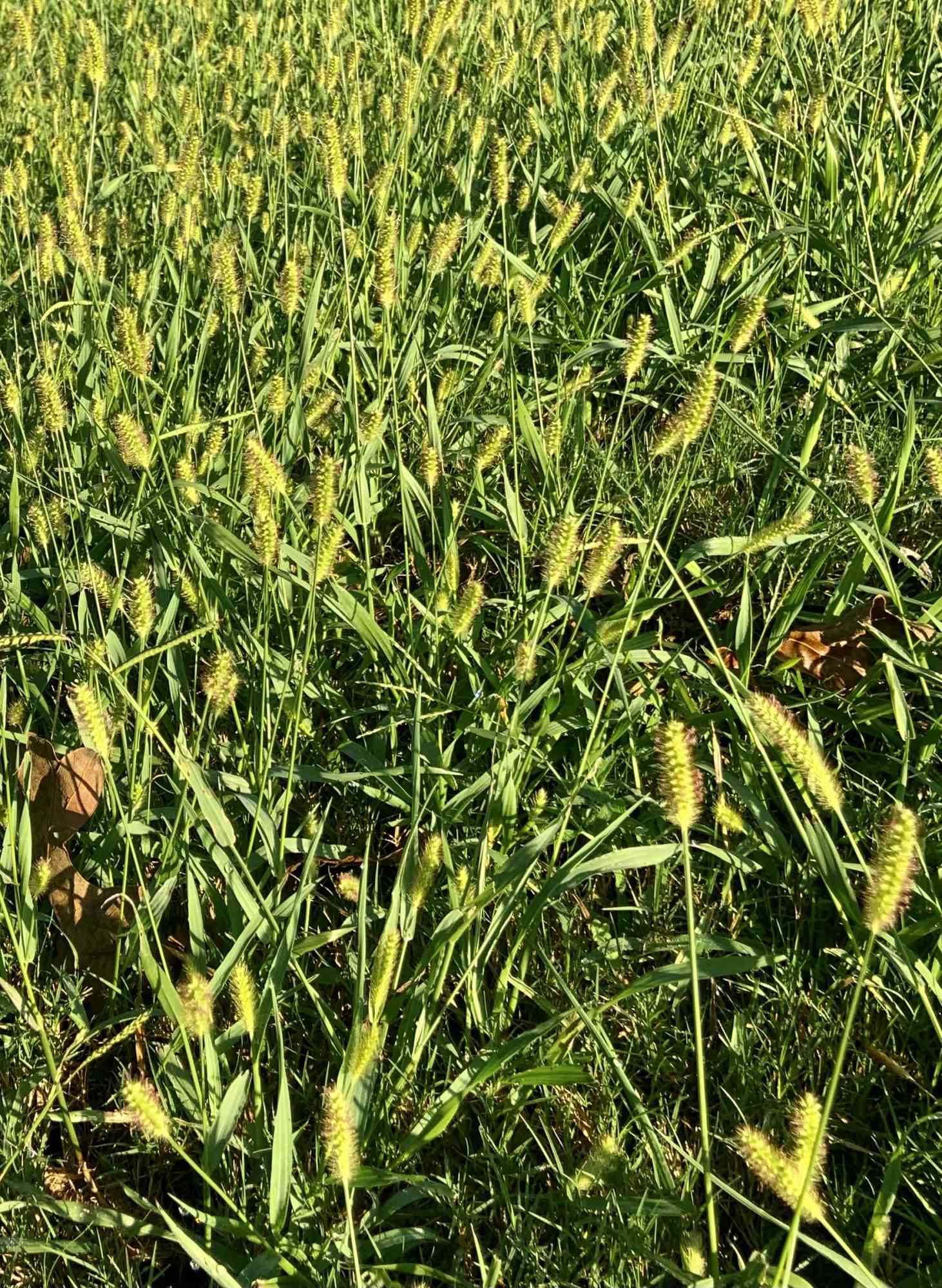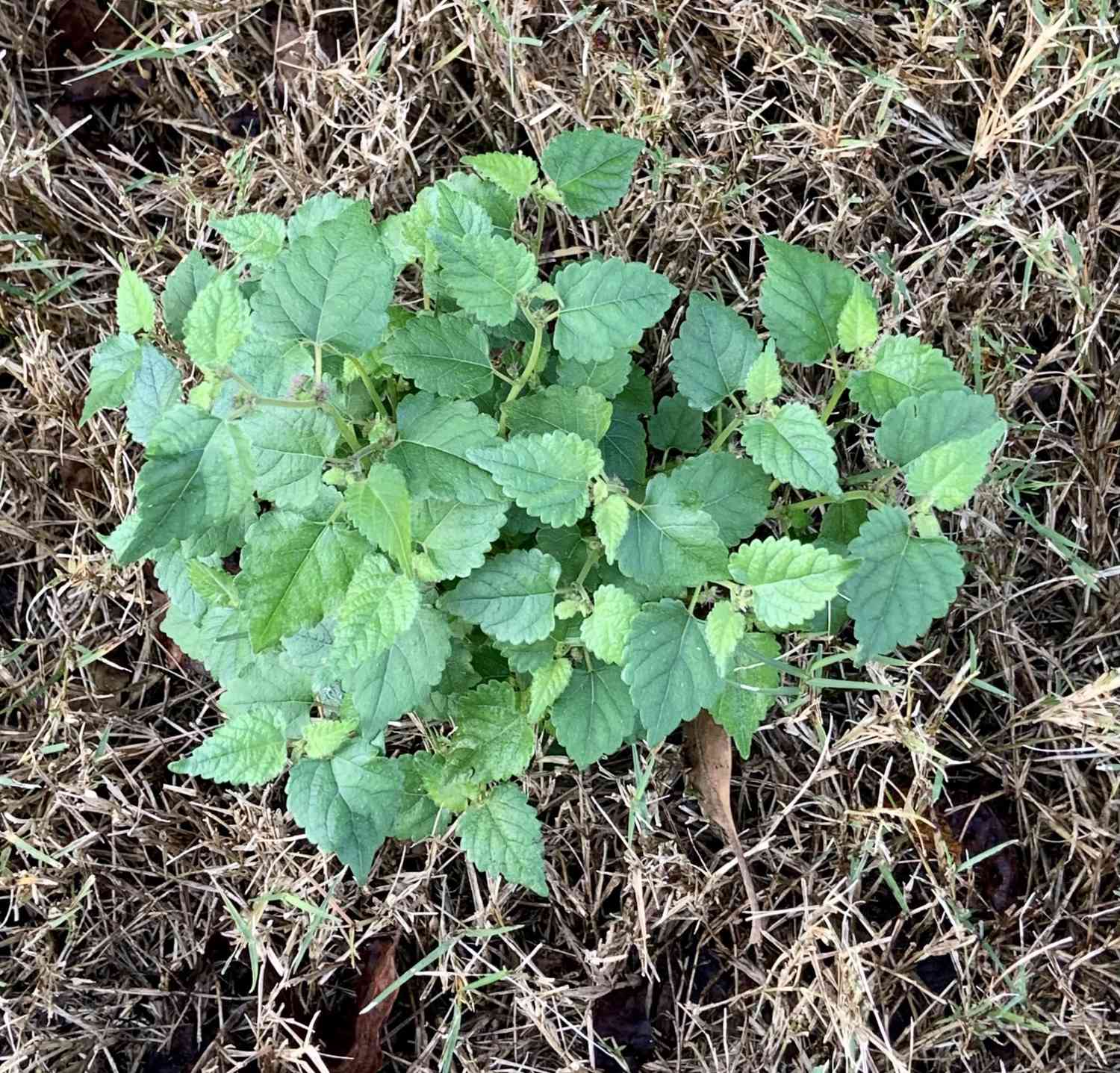Most homeowners recognize dandelions, clover, and nutgrass when they see them in their lawns and tolerate or eradicate them. But certain weeds fly under the radar. They either germinate in late summer when you think the battle is over or sneak in under the cover of taller grass until they conquer the whole lawn by summer’s end. Peel your eyes for the following four fiends.
Chamberbitter
(Phyllanthus urinaria)
No, the weeds shown at top are not mimosa seedlings. They’re plants called chamberbitter that germinate en masse in late summer following a good rain. How did they get there? Well, if you turn over a leaf, you’ll see small, yellow flowers hanging there. These flowers distribute scads of seeds that won’t sprout for another year. An annual weed, chamberbitter dies with the first frost, but grows a treelike root system before that, making it hard to pull. The best defense is dense grass that isn’t cut below 1-1/2-inches and a lawn weedkiller labeled for your type of grass.
Knotroot Foxtail

(Seteria geniculata)
If you cut your lawn regularly, this perennial weed may hide in it all summer without you knowing. It looks like a clumping lawn grass, although the blades are coarser and will grow much taller unless mowed. The common name, foxtail, comes from the spikes of fuzzy flowers that shoot skyward in late summer. Each spike releases hundreds of seeds, each of which will grow into an ever-expanding clump of foliage. Ignore it and voila! Your lawn is now a field of barley. The best control right now is to keep it cut so it doesn’t flower. Then bite the bullet and gradually dig up and throw away the clumps. Resist the urge to spray it with Roundup, as that will kill your good grass too.
Mulberry Weed

(Fatoua villosa)
Named for leaves that resemble those of a mulberry tree, this is not a tree, but an insidious invader that grows about a foot tall. I’ve never encountered a plant so eager to flower and reproduce. Seedlings just two inches high form fuzzy, rounded flower clusters at every point a leaf meets a main stem. Chances are you’ll never notice this until the following year, when a zillion mulberry weeds carpet your garden. Pull and throw away every seedling as soon as you see it. Persistence is key. You can use broadleaf weedkillers on it, but that won’t affect seeds it has already dropped.
Prostrate Knotweed

(Polygonum aviculare)
This is my nemesis. An annual lawn weed that sprouts in spring and dies with the frost, it has just about destroyed my Bermuda grass front lawn. It’s able to do this because, unlike Bermuda that hates shade, knotweed likes sun or shade. It also grows in any type of soil and needs no watering. Growing less than an inch tall, it features long, wiry stems with oval, deep green leaves. Seeds drop all summer to prepare for the onslaught next spring. If it were hardy, it might make somebody a good, no-effort ground cover, but all it did for me is choke out my grass. Broadleaf weedkillers don’t touch it beyond the seedling stage. It merely turns yellow for a week, greens back up, and looks happy as a clam. Thankfully, Roundup is its Kryptonite, so here’s my plan. Kill the whole lawn with Roundup and then re-sod using a beautiful, shade-tolerant Zoysia called «Zeon.» I’ll let you know what happens.
Was this page helpful?
Thanks for your feedback!
Tell us why!